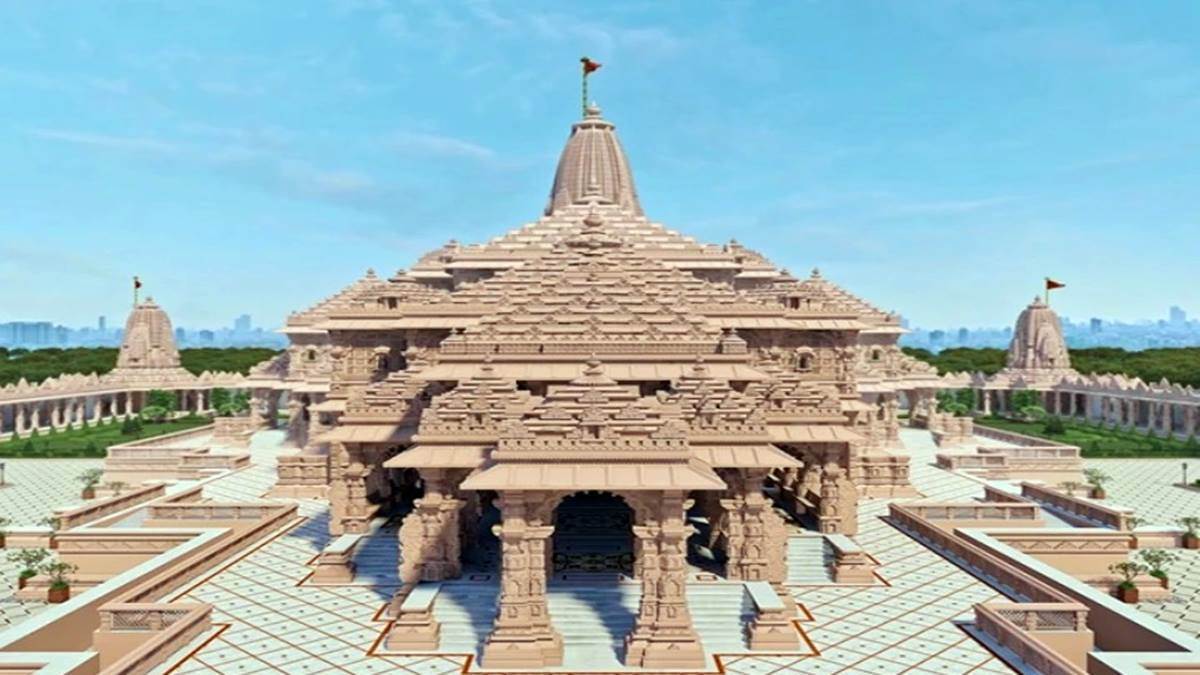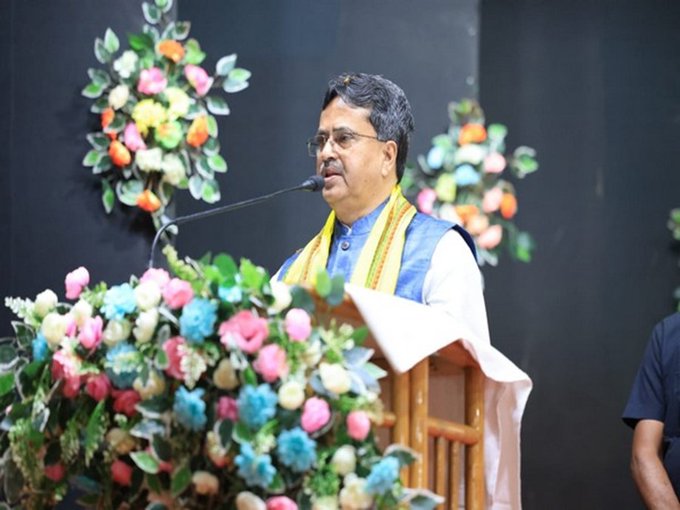Religious tourism, which has always attracted both domestic and foreign tourists, is expected to get a big boost in the coming years
 Dhurjati Mukherjee I INFA Service
Dhurjati Mukherjee I INFA Service

Religious tourism, which has always attracted both domestic and foreign tourists, is expected to get a big boost in the coming years. There are expectations that this will attract more and more tourists. Spiritual tourism has evolved as a concept and is significantly contributing to the overall revival of India’s tourism industry. With the consecration of the Ram temple in Ayodhya, demand trends indicate increased interest for the destination from customers across segments with an uptick of 150 per cent.
According to the research wing of State Bank of India expects the total expenditure by tourists, both domestic and foreign, in Uttar Pradesh may cross Rs 4 lakh crore mark by the end of this year. SBI Ecowrap estimates that Yogi Adityanath government earn an additional tax revenue of Rs 20,000-25,000 crore due to a huge spurt in several tourists during fiscal year 2025.
Global brokerage firm Jefferies has predicted in a report that the Ram temple could lead to “unlocking of India’s tourism potential” by attracting over 50 million tourists a year. It said the grand opening of the temple “is a big religious event. It also comes with a large economic impact as India gets a new tourist spot which could attract over 50 million tourists per year. A Rs 85,000-crore makeover (new airport, revamped railway station, township, improved road connectivity etc) will likely drive a multiplier effect with new hotels & other economic activities. It can also set a template for infra driven growth for tourism.”
The Modi government has started improving infrastructure and most of the pilgrim centres are now a better place compared to what they were a decade ago. Data reveals that there has been a 97 per cent growth in searches for spiritual destinations on the platform in the last two years, and the searches for Ayodhya from India increased by more than 1,800 per cent since the inauguration announcement, with the peak searches on December 30, which was when the Ayodhya airport was inaugurated.
According to figures released by the Ministry of Tourism in March 2023, places of religious tourism earned Rs 134,543 crore in 2022, up from Rs 65,070 crore in 2021. It can thus be presumed that spiritual/ religious tourism is a significant player in India’s travel recovery after the post pandemic years.
Way back in 2015, the government launched the ‘Pilgrimage Rejuvenation And Spiritual Augmentation Drive’ (PRASAD) scheme of the tourism ministry and in 2016 focussed on developing pilgrimage sites across India for enriching the religious tourism experience. It aimed to integrate pilgrimage destinations in a planned and sustainable manner to provide a complete religious tourism experience through better and easier transportation systems — roadways, railways and waterways.
Moreover, the demand for visitors’ spiritual journeys is no longer restricted to traditional pilgrimages but a combination of spiritual breaks with unique local experiences and outdoor adventures like white-water rafting and night trekking in Vaishno Devi, bungee jumping in Rishikesh, boating on the river Ganga, visiting a heritage crafts village in Puri or learning a local art like Kalayaripayattu in Kerala. According to SOTC, hotel occupancy in these destinations is almost around 100 per cent on weekends and holy dates, while on average occupancy levels stand at 60-80 per cent.
Coming to Ayodhya, it has witnessed a surge in hotel construction and development. Currently, the city has approximately 17 hotels with around 600 rooms. To meet the anticipated increase in tourist arrivals, 73 new hotels are in the pipeline with 40 of them already under construction, as per a report. Several renowned hotel chains and hospitality companies, including IHCL (Indian Hotels Company Limited), Marriott International, Wyndham, and OYO Rooms, are planning on creating more hotels in Ayodhya. The hospitality projects are expected to add significant room capacity to accommodate the growing number of tourists and pilgrims that are expected to visit Ayodhya.
Phase I of Ayodhya’s the new airport is operational, becoming a milestone in facilitating air travel to and from the city. This has been built at a cost of approximately $175 million and has an annual handling capacity of 1 million passengers. Meanwhile, the town’s tourist footfall has already shot up from nearly 3.5 lakh in 2019 to over 2 crore in both 2022 and 2023. Experts in this sector feel that the Ayodhya-Varanasi-Prayagraj triangle could drive Uttar Pradesh’ trillion-dollar economy dream. This could possibly surpass the Delhi-Agra-Jaipur tourism circuit shortly.
In popular tourist places such as Rishikesh, Varanasi, Ujjain and Vrindavan, hostels are being set up to attract tourists along with improving infrastructure. Recently the Jagannath Heritage Corridor was inaugurated by the Odisha Chief Minister Naveen Patnaik. Transformation of the iconic temple site is intended to improve facilities for visitors and pilgrims. The revitalisation of the Kashi Vishwanath corridor also led to a huge spurt in tourist growth.
It is evident that even general tourism sites in many states are being given a religious touch. Though this may be a good measure to attract more tourists, specially in a deeply religious country like India, these centres need to have other places of attraction such as museums, monuments, children’s parks etc.
The pandemic has changed the perception of travellers and there has been a shift in consumer behaviour. While spiritual tourism was once associated with the senior citizen segment, over the past two years, there has been a significant uptick in demand from multi-generational families, couples/honeymooners, groups of friends and millennials as well. Reports coming in from Ayodhya indicate that young people are visiting the temple in large numbers. Does it indicate that Modi has instilled a religious fervour among the young generation?
An important aspect that needs to be pointed out is that promotion of religious tourism is necessary as it has a multiplier effect in creation of jobs and overall development of the region. But religious tourism should not mean just promoting the Hindu places of worship. The Muslim and Christian religious places as also those of other communities like Sikhs and Jains should also be developed through a judicious plan.
However, tourism in India does need to catch up still. The contribution of this sector to India’s GDP is just around 6.8 per cent and India is positioned below most of the emerging and developed economies. The last Union budget of 2023 had allocated ₹2400 crore to the tourism sector, but it cannot be denied that requirements are much more. It is, however, encouraging to note that the private sector has been coming in a big way to invest in this sector, specially manifest in the investments at Ayodhya. Ayodhya it is said could even surpass the Vatican City and Mecca in terms of the number of visiting devotees, if infrastructure and stay facilities are upped on the same trajectory over the coming months. On the first day alone there were 5 lakh visitors to the temple. The Tirupati Balaji in Andhra Pradesh attracts 2.5 crore devotees yearly, similar to Mecca in Saudi Arabia, and the Vatican gets about 90 lakh visitors annually. The other top destinations are the Vaishno Devi temple in Jammu & Kashmir which gets 80 lakh people yearly, whereas the Taj Mahal attracts 70 lakh people. Indeed, development of tourism, both religious or spiritual, would bring in valuable foreign exchange and lead to economic development.
Promotional | NE India Writing Star Contest







